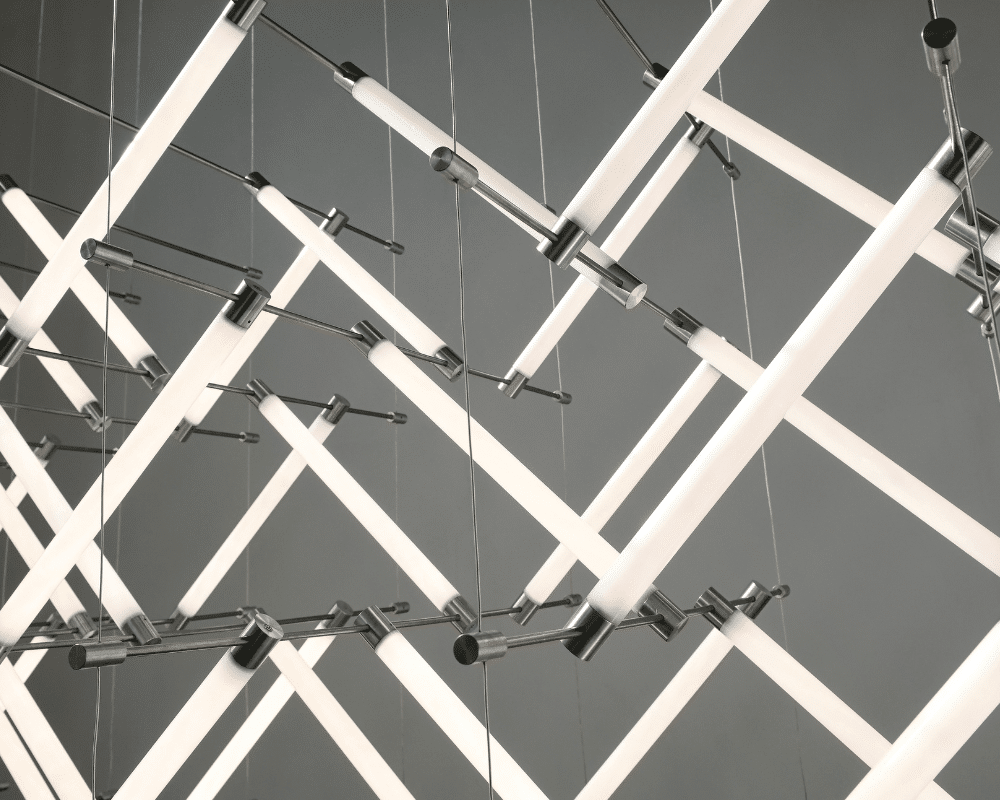With fluorescent T5 and T8 lights being phased out, and the manufacture of fluorescent tubes ceasing, NOW is likely the best time to consider upgrading the lighting system for your building.
Controlling and dimming LED lights is relatively simple and the initial higher cost of LEDs will be compensated by the energy and maintenance savings over time.
We can provide a full lighting upgrade package with integrated DALI controls as either:
-
a CAPEX (outright purchase) or
-
an OPEX expense (via an operating lease).
Speak to us regarding options available.

Dimming LED Lights
Later this year (2023) the UK (and many other countries) will be phasing out T5 and T8 fluorescent lights/tubes. The banning of these lights will be followed by the phasing out of plug-in compact fluorescent lamps by early 2025.
Once the manufacturing of fluorescent tubes/lamps is discontinued, it will become impossible to replace tubes in the T5 and T8 light fittings currently illuminating many New Zealand buildings.
It would be wise to consider a refurbishment of your lighting before the situation becomes urgent.
There is little doubt that manufacturers of LEDs are contemplating with glee the time when the building owner has no choice but to upgrade to LED fittings. It is likely that during that period when LEDs are in high demand, the industry may see significant upward movement in pricing, even if only for the short-term.
Waiting to the last possible moment to swap out the then “obsolete” fluorescent fittings could be a very expensive process.
Comparing Fluorescent Lights with LEDs
Although T8 and T5 fluorescent lights may have been cheaper initially, LEDs are more cost-effective over time.
The benefits of LEDs versus fluorescent lights include:
- More Energy Efficient: On average using 60% less power to light the same facility. This is due to the energy-saving technologies used to produce LEDs far outpacing those of fluorescent linear tubes.
- Life Expectancy: LEDs generally last two to four times longer than fluorescent lights.
- Cost-Effective: Although LEDs cost more upfront, ultimately there will be energy savings and lower maintenance costs.
- Better for the Environment: Unlike linear fluorescent tubes, LED lights don’t contain mercury. Fluorescent lights/tubes require careful handling due to the hazardous nature of the mercury they contain. This includes fluorescent emergency fittings.
- Instant On: No initial flickering with LED bulbs. Additionally they can be turned on/off as often, and as frequently as required without shortening the lifespan. This makes LEDs more suitable for lighting where daylight harvesting or similar requirements are sought and where the light source is constantly dimming up/dimming down/turning off dependent on passing cloud cover etc.
- Low-Cost Options: Controlling and dimming LED lights is very easy and can be cost-effective with stand-alone solutions for a single room or area working directly from a switch or sensor with no programming required.
If upgrading your lighting system is inevitable, it may well be the appropriate time to either upgrade, or install a new DALI-2 lighting control system that will not only be compliant with the New Zealand Lighting Control Standard but will assist with the monitoring and maintenance of your new lighting system and ensure the system operates with longevity, cost-saving, and the well-being of building occupants as the highest priorities. An upgrade to the emergency lighting should be considered at the same time.
Controlling and Dimming LED Lights
DALI (Digital Addressable Lighting Interface) is a popular protocol used for controlling and dimming LED lights in commercial and industrial applications.
Some reasons why DALI is considered the best way to dim LED lights:
- Digital Control: DALI-2 is a digital protocol, which means that it uses binary code (0s and 1s) to communicate between lighting devices, such as LED drivers, controllers, and sensors. This digital control allows for precise and accurate dimming of LED lights, with smooth and flicker-free performance.
- Addressable: DALI is an addressable protocol, which means that each LED driver or device in a DALI system has a unique address. This allows for individual control and dimming of each LED fixture or group of fixtures, providing flexibility and customization in lighting design.
- Scalability: DALI is a scalable protocol, which means that it can be easily expanded or modified to accommodate changes in lighting layouts or requirements. Additional DALI devices can be added to a DALI system without the need for rewiring, making it a flexible solution for lighting control in various applications.
- Wireless Capability: Additionally DALI is now available as a wireless system (DALI+) which can function as a totally wireless network, or as a hybrid system with both wired and wireless DALI working seamlessly together as a single system.
- Interoperability: DALI is an open standard protocol, which means that it is not tied to any specific manufacturer or brand. This allows for interoperability among different DALI-2 certified devices from different manufacturers, providing a wide range of options for LED drivers, controllers, switches and sensors that can be used in a DALI system.
- Energy Efficiency: DALI supports advanced lighting control strategies, such as daylight harvesting, occupancy sensing, and scheduling, which can help optimize energy usage and reduce electricity consumption. This makes DALI an energy-efficient solution for dimming LED lights, which is beneficial for sustainability and cost savings.
- Compliance: DALI is widely recognized and accepted as a standard for lighting control in many countries and regions, and it complies with relevant lighting control standards and regulations. This ensures that DALI-2 certified LED lighting systems meet industry requirements for safety, performance, and interoperability.
Acknowledged as leading “DALI experts” in New Zealand, we propose zencontrol DALI-2 or DALI+ (wireless) systems.
zencontrol is also currently the ONLY system that is compliant to the AS/NZS 62386 suite of standards for both input and output devices.
Overall, DALI is considered one of the best ways to dim LED lights due to its digital control, addressability, scalability, interoperability, energy efficiency, and compliance with standards.


